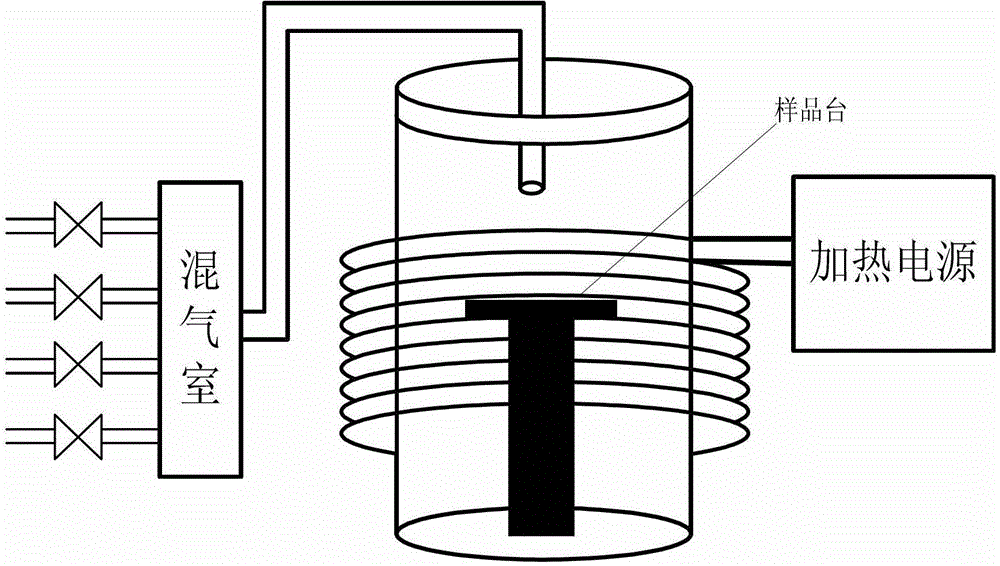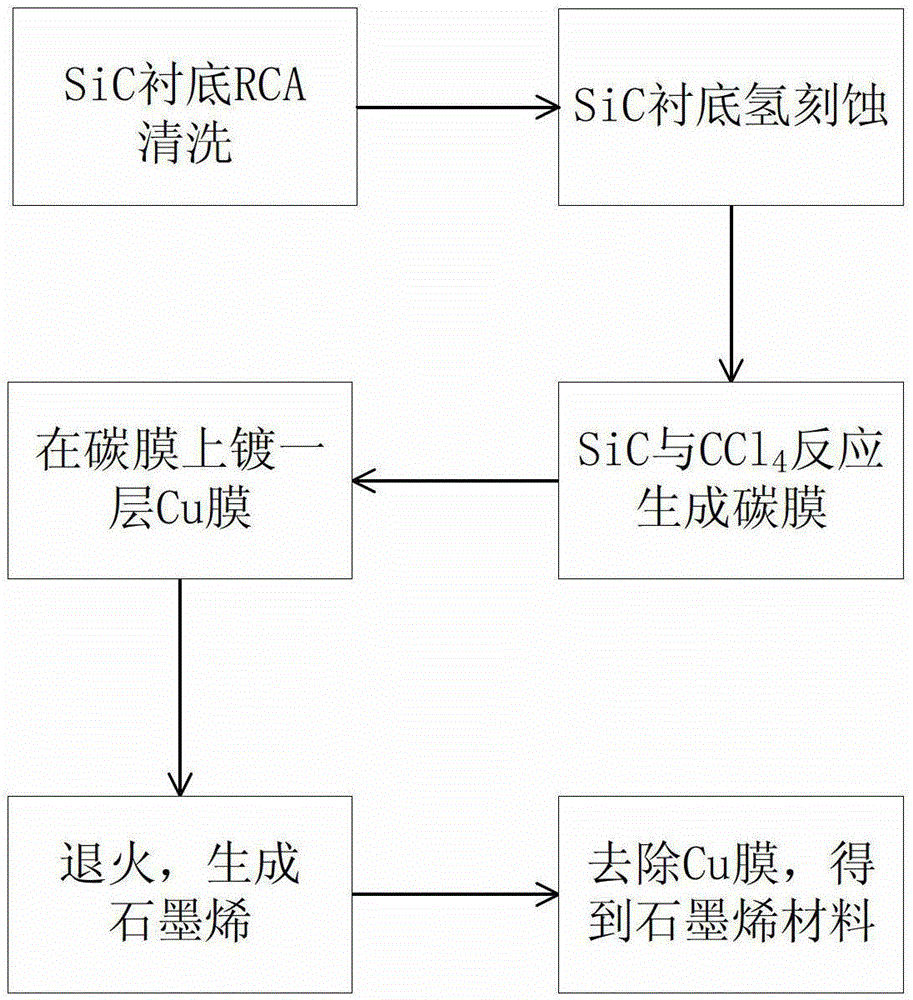Cu film annealing based method for preparing large-area graphene on SiC substrate
A graphene, large-area technology, applied in the field of microelectronics, can solve the problems of unstable carrier mobility, inability to use large-scale production, small graphene area, etc., to achieve easy control of the growth process, high uniformity, and surface. smooth effect
- Summary
- Abstract
- Description
- Claims
- Application Information
AI Technical Summary
Problems solved by technology
Method used
Image
Examples
Embodiment 1
[0027] Example 1, making 4H-SiC and CCl 4 Reaction and Cu film annealing of large-area graphene.
[0028] Step 1: The 4H-SiC substrate is cleaned by the RCA method to remove organic and inorganic chemical pollutants on the sample surface:
[0029] (1.1) Place the 4H-SiC substrate in deionized water for ultrasonic cleaning for 15 minutes, take it out, and rinse it repeatedly with deionized water;
[0030] (1.2) Soak the cleaned 4H-SiC substrate in a solution of ammonia water: hydrogen peroxide: deionized water = 1:2:5, boil it, soak it for 15 minutes, and wash it repeatedly with deionized water for the second time;
[0031] (1.3) The 4H-SiC substrate after the second cleaning was immersed in a solution of hydrochloric acid:hydrogen peroxide:deionized water=1:2:8, boiled, soaked for 15min, and washed repeatedly with deionized water for the third time.
[0032] Step 2: performing hydrogen etching on the 4H-SiC substrate after RCA cleaning.
[0033] Set the pressure in the reac...
Embodiment 2
[0045] Embodiment 2, making 4H-SiC and CCl 4 Reaction and Cu film annealing of large-area graphene.
[0046] Step 1: RCA is used to clean the 4H-SiC substrate to remove organic and inorganic chemical pollutants on the surface of the sample. The cleaning steps are the same as in Example 1.
[0047] Step 2: Put the 4H-SiC sample into the quartz tube, and heat it with exhaust gas.
[0048] Set the pressure in the reaction chamber to 13.3Pa, raise the temperature to 1600°C, and perform hydrogen etching on the substrate for 30 minutes. The hydrogen flow rate is 100L / min to remove scratches on the surface of the 4H-SiC substrate and generate nanometer-level high periodicity. Smooth step topography.
[0049] Step 3: removing hydrogen etching residual compounds on the surface of the 4H-SiC substrate.
[0050] Lower the temperature of the reaction chamber to 850°C and feed SiH 4 The gas, whose flow rate is 0.5ml / min, lasts for 10min to remove the compound produced by hydrogen etchi...
Embodiment 3
[0058] Embodiment 3, making 6H-SiC and CCl 4 Reaction and Cu film annealing of large-area graphene.
[0059] Step A: Cleaning the 6H-SiC substrate by using the RCA method, and the cleaning steps are the same as in Embodiment 1.
[0060] Step B: Set the pressure in the reaction chamber to 13.3Pa, raise the temperature to 1600°C, and perform hydrogen etching on the substrate for 20 minutes with a hydrogen flow rate of 120L / min to remove scratches on the surface of the 6H-SiC substrate and produce nanoscale high The periodic smooth step morphology.
[0061] Step C: Lower the temperature of the reaction chamber to 850°C and feed SiH 4 The gas, whose flow rate is 0.5ml / min, lasts for 10min to remove the compound produced by hydrogen etching on the surface of the 6H-SiC substrate.
[0062] Step D: Heat the reaction chamber to 1000°C, open the gas valve, and put Ar gas and CCl 4 After the gas is passed into the gas mixing chamber and mixed, it is passed into the reaction chamber,...
PUM
 Login to View More
Login to View More Abstract
Description
Claims
Application Information
 Login to View More
Login to View More - R&D
- Intellectual Property
- Life Sciences
- Materials
- Tech Scout
- Unparalleled Data Quality
- Higher Quality Content
- 60% Fewer Hallucinations
Browse by: Latest US Patents, China's latest patents, Technical Efficacy Thesaurus, Application Domain, Technology Topic, Popular Technical Reports.
© 2025 PatSnap. All rights reserved.Legal|Privacy policy|Modern Slavery Act Transparency Statement|Sitemap|About US| Contact US: help@patsnap.com


